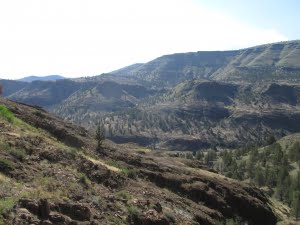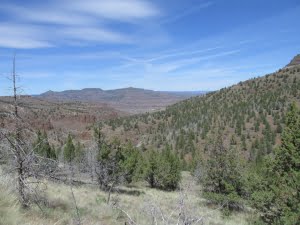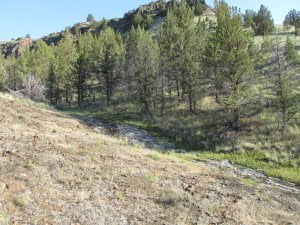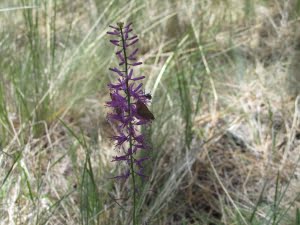
Microclimates and Mustard
For much of June, Connor Whitaker, from the CR intern group, has been working closely on projects with Erin Gray and Matt Bahm. Erin and Connor spent a week monitoring an experiment that investigates the effects of microclimate on Kincaid’s lupine (Lupinus oreganus); following this, Matt and Connor spent two weeks near the John Day National Monument, surveying populations of the rare endemic species, the arrow-leaf thelypody (Thelypodium eucosmum).

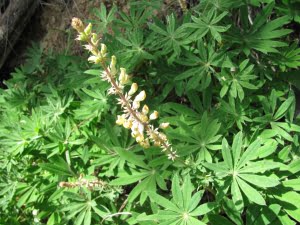
Kincaid’s lupine is an endangered legume, and is a key host plant for the endangered Fender’s blue butterfly. Kincaid’s lupine has suffered greatly from land development in the Willamette Valley. Due to loss of suitable habitat, many populations are now fragmented and genetically isolated.
In addition to the pressures of land use on Kincaid’s lupine, climate change is a critical threat to the long term success of these isolated populations. While uncertainties remain about the changes to future precipitation for the Pacific Northwest, a hotter climate is likely to increase stress on a plant already facing competition from non-native species and loss of suitable habitat.
To ensure long-term survival of this species, it is likely that new populations must be established. This will discourage bottle-necking, improve gene flow, and combat losses from habitat destruction. This experiment sheds valuable light on what kinds of microclimates Kincaid's lupine might successfully propagate in, and may inform future land management decisions regarding where future populations might be established.
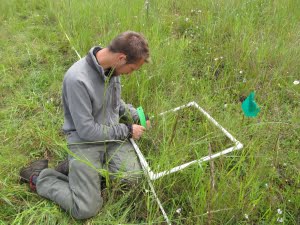
On the other side of the Cascades, Matt and Connor went to survey populations of T. eucosmum, also known as arrow-leaf thelypody. T. eucosmum thrives in wet environments in sagebrush dominated communities, typically along seeps and waterfalls in an otherwise arid environment.
Surveying was the task to monitor previously documented populations of plants, using knowledge of a plant’s known habitat to find new populations, completing a census of the individuals in these populations, and assessing threats to population viability.
Many of the populations we visited had not been surveyed in close to, and in some cases more than, 20 years. The purpose of surveying was to provide snapshots of the health of a species, and to understand whether the plant is in a state of decline, stability, or increasing. This informs policy decisions regarding its habitat. To provide an accurate picture, a species would ideally be surveyed every five years. However, the lack of easy access to many suitable locations, and limits to time, budget, and manpower are frequent and difficult barriers to overcome. Many unknowns about T. eucosmum currently exist, and by studying it we will gain more knowledge about the threats that it faces.
Tags:
Restoration
Research
Education
Contact
Main Office:
4950 SW Hout Street
Corvallis, OR 97333-9598
541-753-3099
info@appliedeco.org
Southwest Office:
1202 Parkway Dr. Suite B
Santa Fe, NM 87507
(505) 490-4910
swprogram@appliedeco.org
© 2025 Institute for Applied Ecology | Privacy Policy
